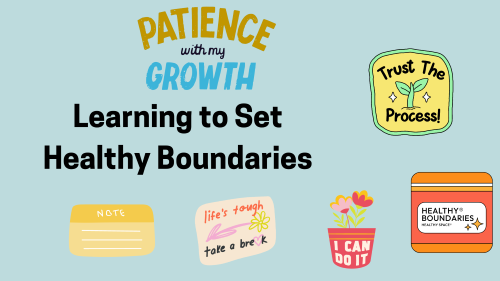
Learning to Set Healthy Boundaries
- Knowing Healthy Boundaries
- Establishing Boundaries Benefits
- Practical Limit-Setting Methods
- Examples of Boundary Setting
Introduction
Healthy limits are crucial to human peace and well-being in the complicated dance of human connection. The invisible gates that separate us from others protect our emotional, physical, and mental well-being. However, defining and keeping limits is difficult for many, resulting in anger, exhaustion, and strained relationships.
This article resource covers healthy limits in detail, providing practical tactics and insightful insights to help you grow personally and professionally.
Knowing Healthy Boundaries
Healthy boundaries are invisible lines we build around ourselves to indicate what is acceptable and unacceptable in our dealings with others. Physical limits define our personal space, whereas emotional boundaries protect our feelings and ideals. To use limits effectively, we must first understand their relevance. Without boundaries, we risk losing autonomy and self-respect to others’ demands.
Establishing Boundaries Benefits
Healthy limits are important for self-respect, relationships, and well-being, not just comfort. Honoring our boundaries shows people our needs and limits, fostering more real and rewarding relationships. Boundaries also reduce stress and overwhelm, helping us prioritize self-care and work-life balance. Setting and maintaining boundaries empowers us to live with intention and integrity, regaining our agency in all aspects of life.
Practical Limit-Setting Methods
Boundaries may seem simple, but implementing them may be difficult, especially for individuals who put others first. Fortunately, numerous practical methods can help set healthy boundaries:
1. Self-Reflection
Consider your beliefs, needs, and restrictions. Your life’s non-negotiables? Why are you uncomfortable or resentful? You can better explain your boundaries by clarifying them.
2. Clear Communication
Healthy limits need good communication. Use “I” expressions to establish your wants and restrictions. Be confident and clear; avoid apologizing or over-explaining.
Consistency is crucial for establishing and maintaining limits. Maintain your limits despite opposition. Consistency helps set limits as non-negotiable in encounters.
4. Learn to decline
Many find saying no difficult because they dread disappointing others. Protecting your time, energy, and resources requires learning to say no. Say no with elegance and firmly without guilt or justification.
5. Set Limits
Limiting your tolerance for others’ behavior is part of creating boundaries. Define and assertively convey your limitations, whether it’s work time or relationship behavior.
Examples of Boundary Setting
Consider these real-life examples of boundary establishing in practice:
1. Boundaries at Work
The committed Sarah works late into the night to fulfill deadlines since her job overburdens her. After feeling burned out, Sarah stopped answering work emails and calls after 6 p.m. By creating this limit, Sarah may emphasize self-care and regain her time without sacrificing her career.
2. Social Boundaries
Alex, a highly empathic person, struggles to decline social invites, often putting others before himself. Alex limits his social responsibilities by gently accepting invites when he is overburdened or weary, realizing this habit is harming him. Alex balances socialization with self-care by respecting his boundaries.
Conclusion
Healthy boundaries weave respect, liberty, and self-care into human interactions. By mastering boundary-setting, we can handle life’s challenges with grace and integrity. Boundaries in our personal and professional lives help us prioritize our well-being, build meaningful relationships, and pursue our goals with clarity.
As you set healthy boundaries, remember that self-discovery and progress need patience, self-compassion, and a dedication to honoring your real self. Accept limits as a tool for personal and professional growth and watch your life blossom with balance, resilience, and fulfillment.
